Affiliate links on Android Authority may earn us a commission. Learn more.
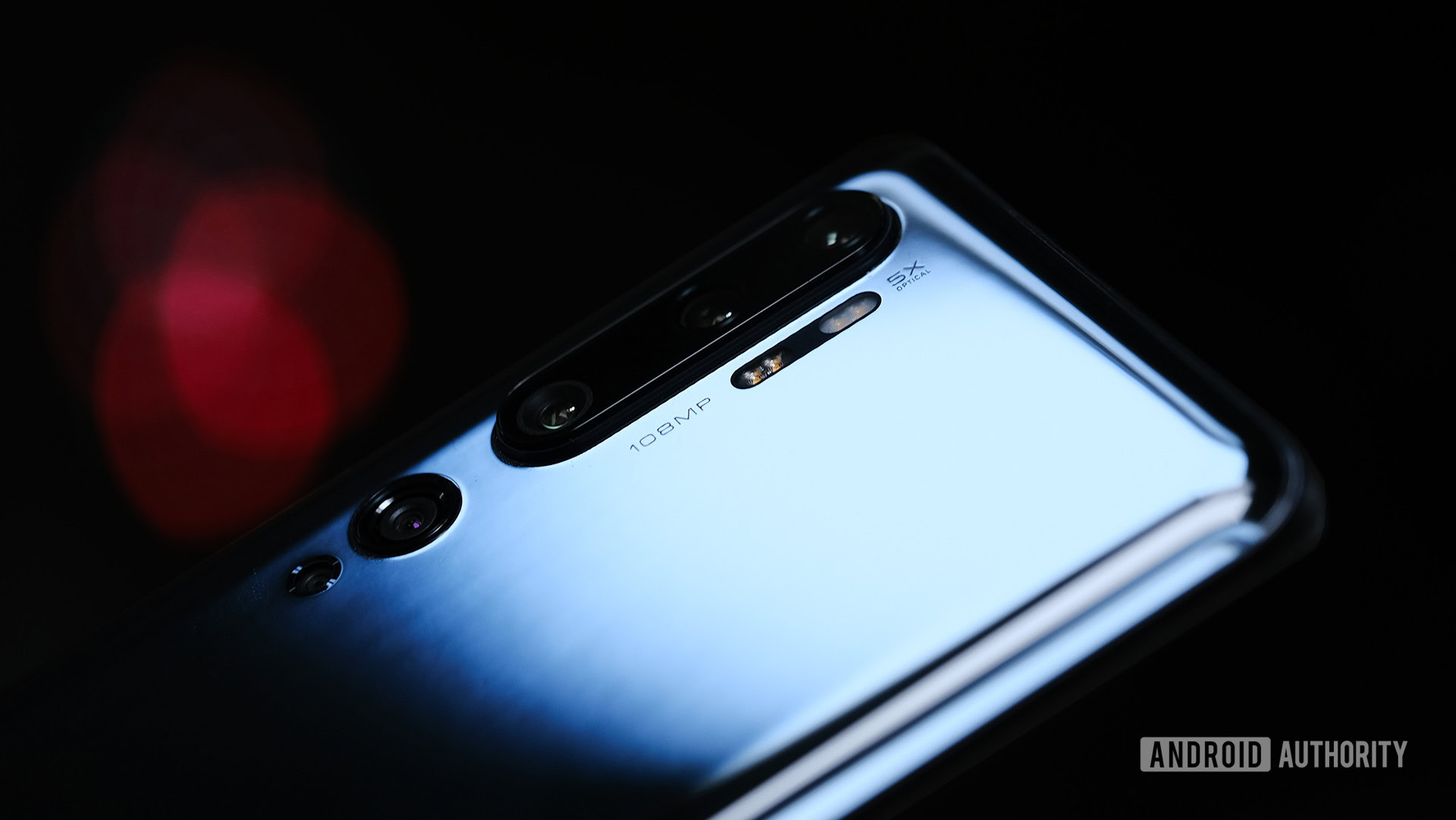
Xiaomi Mi Note 10 review: A photographer's Swiss Army knife
Published onOctober 31, 2021
Xiaomi Xiaomi Mi Note 10
What we like
What we don't like
Xiaomi Xiaomi Mi Note 10
Xiaomi is a company that aims to offer extremely high-value products at wildly competitive prices. From its phones to its suitcases, Xiaomi pushes the boundaries of price-to-performance ratios by pledging to a maximum of 5% profit margin on hardware.
With the Xiaomi Mi Note 10, the company is once again pushing the boundaries of what’s possible in a smartphone. With a form factor similar to that of other devices, it offers several surprising specs that you won’t find in other smartphones today.
Read: Xiaomi Mi 10 Pro review: Delivering the goods | Xiaomi Mi 10 review: Premium hardware let down by unpolished software
Are these changes enough to earn Xiaomi market share in the west? Find out in Android Authority’s Xiaomi Mi Note 10 review.
Xiaomi Mi Note 10 review: The big picture
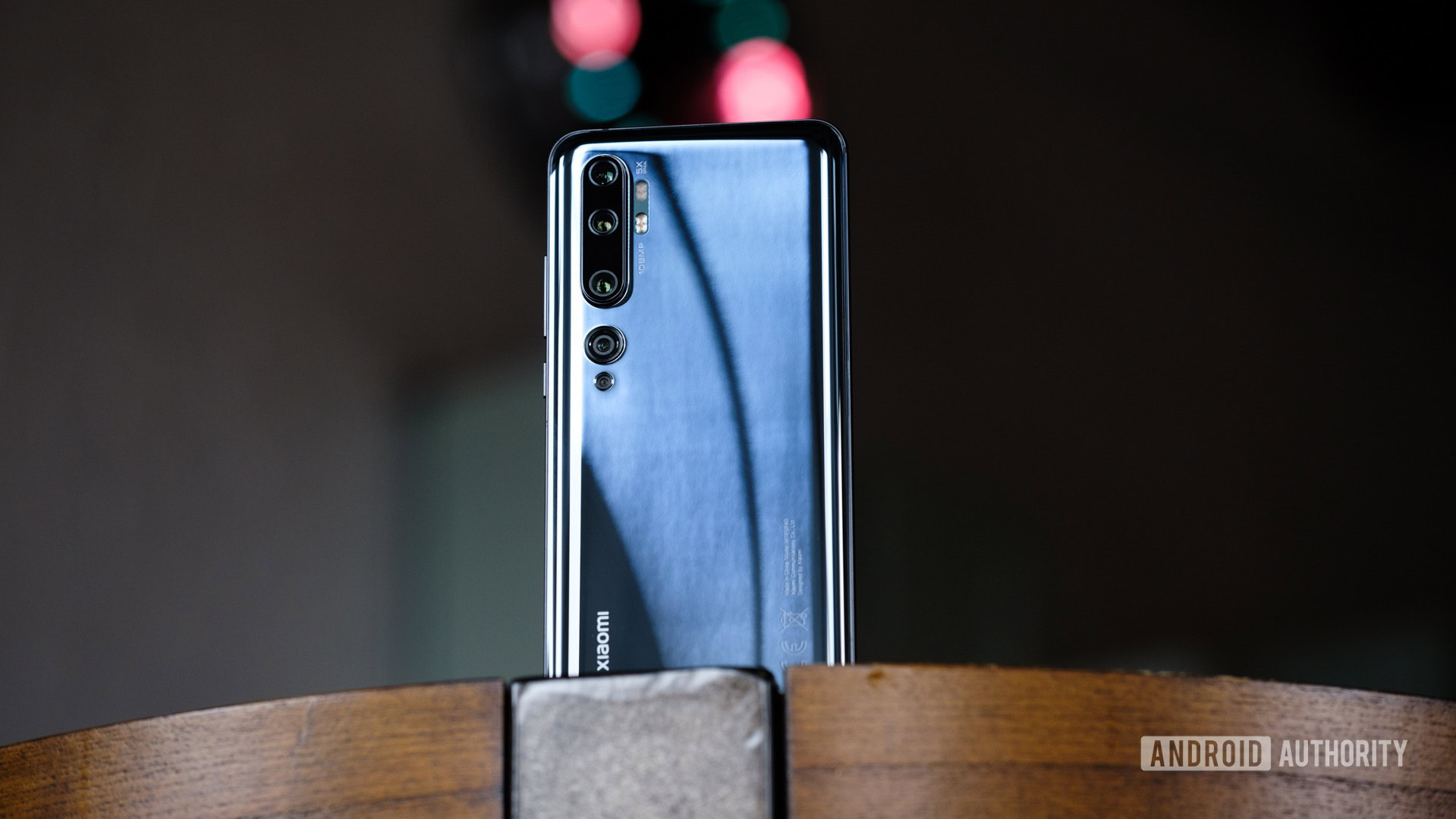
Xiaomi is angling the Mi Note 10 as a photography-focused device. This is the first smartphone to ship with a 108MP sensor, which can bin down to 27MP images for more light gathering. It also sports four other cameras on the rear, covering a variety of focal lengths.
The other key feature of the Mi Note 10 is its huge battery. Xiaomi was able to maintain a footprint similar to other devices while including a massive 5,260mAh battery in this device. This translates to incredibly good battery life, especially when paired with the lower-powered Snapdragon 730G.
While Xiaomi’s software is divisive for many, its powerful hardware makes the Mi Note 10 compelling, especially at its competitive price point.
What’s in the box
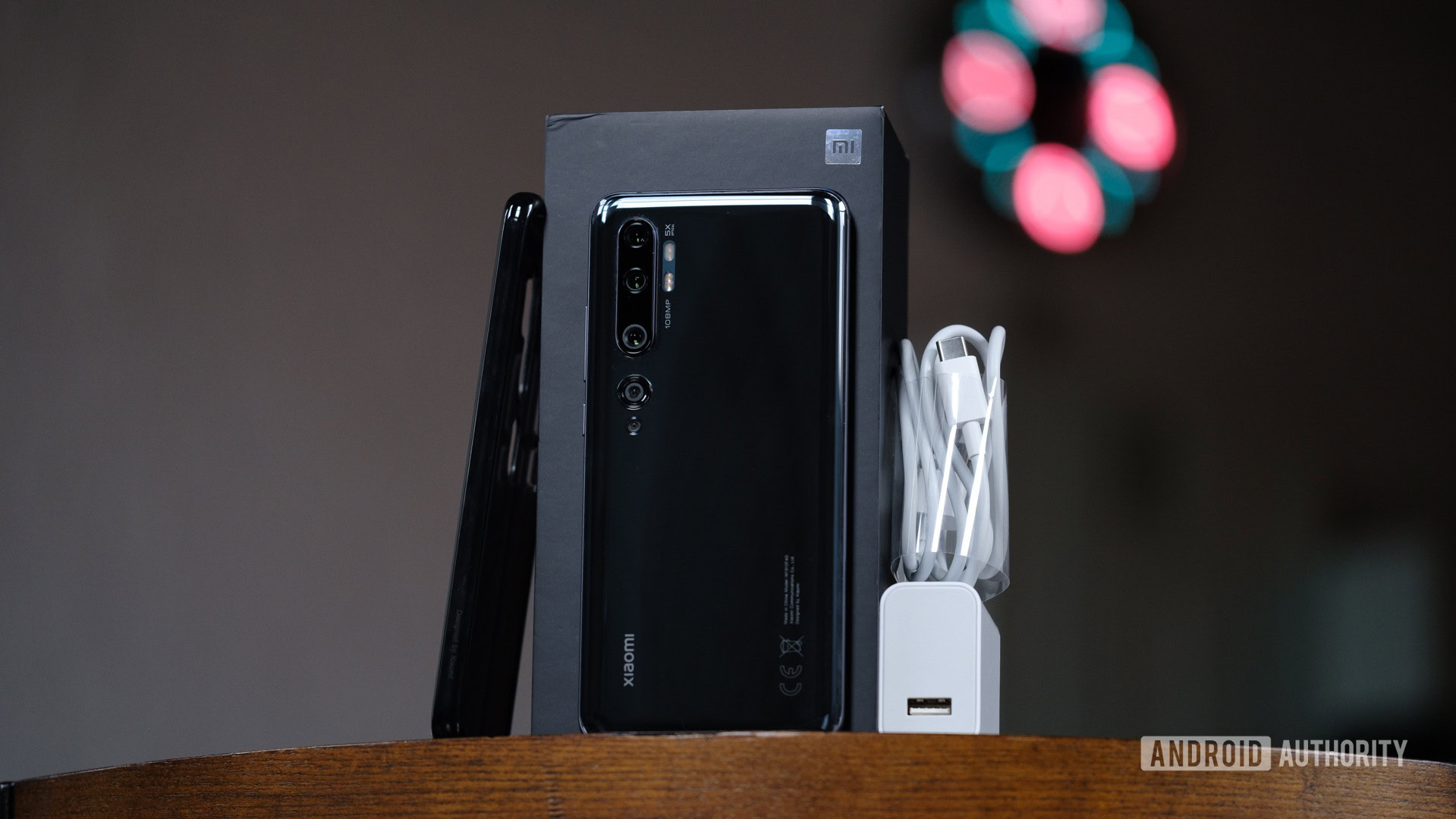
- 30W charging brick
- USB-A to USB-C cable
- Dark grey TPU case
- Quick start guide
The Xiaomi Mi Note 10 comes with a 30W charger, so it will charge quickly, even with the huge battery.
My black review unit came with a black TPU case. The green version also comes with a black case, but if you buy the white model you get a transparent case.
There are no headphones included.
Design
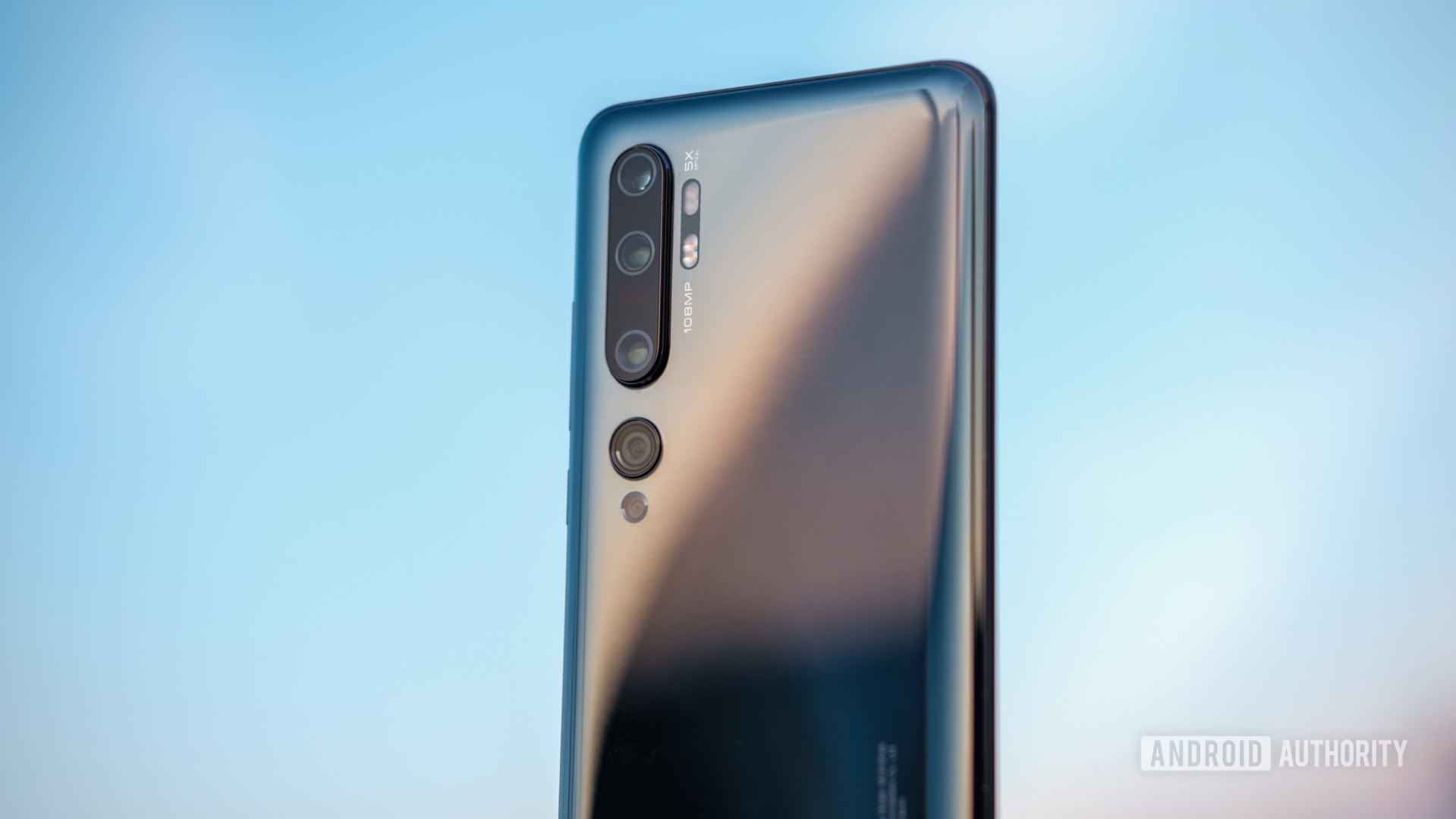
- 157.8 x 74.2 x 9.67mm
- 208g
- Teardrop selfie camera
- Curved edges
- 108MP Penta-camera system
- Stereo speakers
The Xiaomi Mi Note 10 is a well-built phone, with curved glass edges and a solid aluminum frame. While well built, the design isn’t incredibly interesting. To me, it looks like a generic HONOR device. That said, besides the Mi Mix series, Xiaomi phones have always been about technical marvels and software, not design.
The Mi Note 10 has a fairly large 6.47-inch Full HD+ display, which curves around the edges of the screen. There is a small chin on the bottom of the display and a waterdrop notch at the top. Above the notch, you’ll find a speaker and earpiece hidden in the bezel.
The right side of the phone houses all of the buttons. There is a volume rocker on the top of the right side with a power button directly below it. Further down, you’ll find a SIM card tray. This device doesn’t support microSD expansion.
The bottom of the phone has a USB-C port, speakers, a microphone, and a 3.5mm headphone jack. The top of the phone has another microphone and an IR blaster. The IR blaster is a welcome addition since they’ve been all but eradicated in smartphones of late.
The back of the phone has a clean design, which is both very reflective and a fingerprint magnet. On the leftmost side, you’ll find five cameras in a line straight down the edge. To the right of the cameras, there are four different flashes. Two of the flashes are diffused while the other two aren’t. This helps to give contour to objects, particularly faces.
While well built, the design isn’t incredibly interesting.
The display glass and back of the phone are made of Gorilla Glass 5.
Display
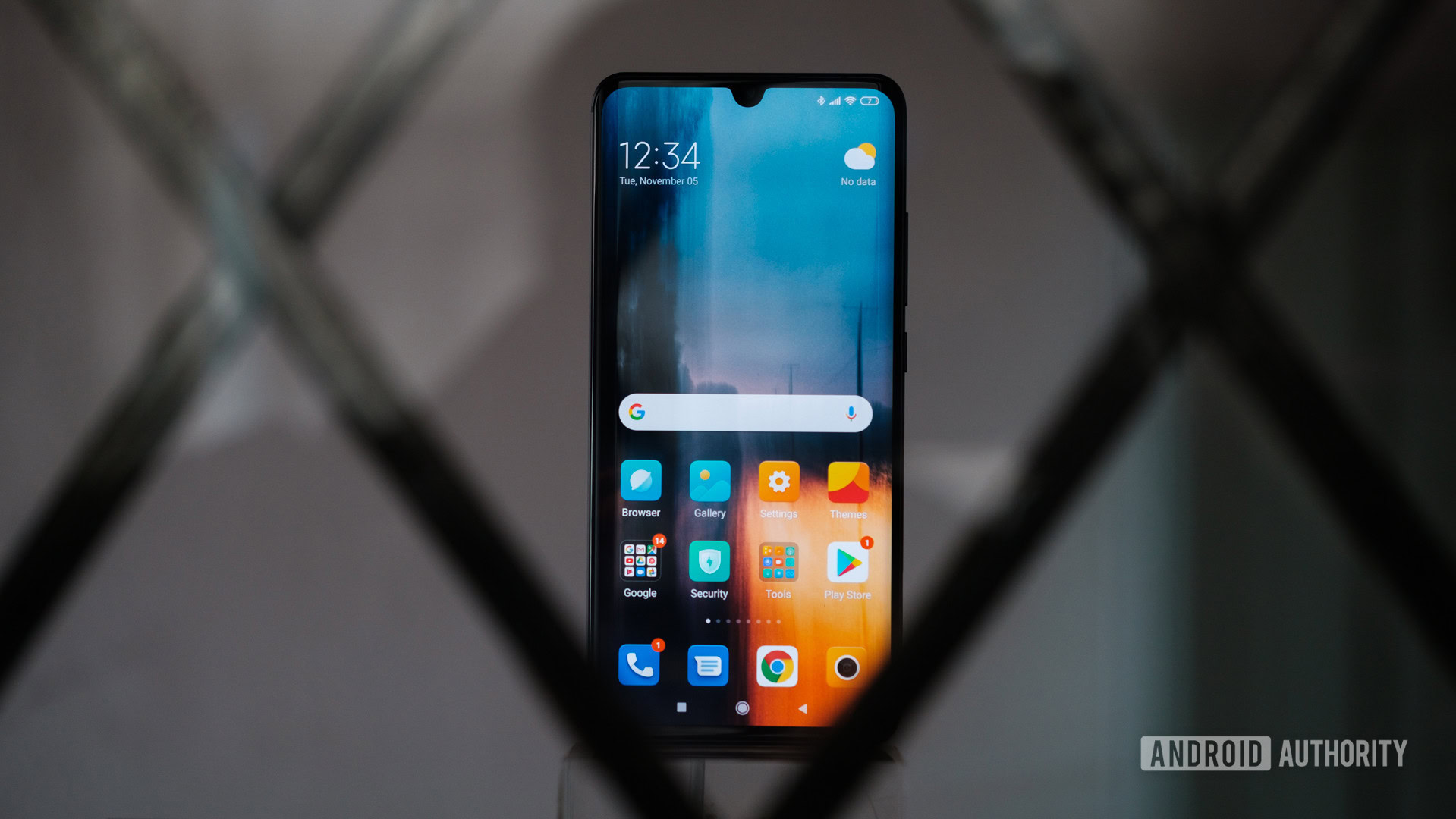
- 6.47-inch AMOLED display
- 2,340 x 1,080 Full HD+ resolution
- 19.5:9 aspect ratio
- HDR10 / HDR+ certified
- Optical in-display fingerprint sensor, 7 x 9mm
The Mi Note 10 is using a Full HD+ panel, and like the OnePlus 7T, it looks great. This is an AMOLED panel, too, so it has deep blacks with a contrast ratio of 400,000:1. In our testing, this device didn’t shine quite as brightly as competitors, with a peak brightness of about 422nits. While not quite as bright as other phones, the Mi Note 10 was still perfectly readable outside. The AMOLED display helps with contrast in direct daylight.
The in-screen fingerprint reader worked quickly and accurately during my time with the phone. Xiaomi has also extended the size of the reader while reducing its thickness by 88%. The optical sensor is now 7 x 9mm. The previous sensor was 7 x 7mm.
Performance

- Qualcomm Snapdragon 730G
- Adreno 618 GPU
- 6GB of RAM
- 128GB of UFS 2.1 storage
Even though the Mi Note 10 isn’t using a flagship Qualcomm processor, it still performed adequately during my time with it. The Qualcomm Snapdragon 730G is a bump up from Qualcomm’s standard Snapdragon 730 processor, adding 15% better graphics performance, among other things.
In daily use, I didn’t notice any hiccups or stuttering. The processor is assisted by 6GB of RAM and 128GB of storage, so things ran smoothly the entire time I tested it.
The Xiaomi Mi Note 10 performed as expected in benchmarks, edging out devices that use the standard variant Snapdragon 730 such as the Xiaomi Mi 9T.
In 3DMark, the Mi Note 10 achieved a score of 2,384 and 2,240 in OpenGL and Vulkan, respectively. This can be compared to the Snapdragon 730-powered Xiaomi Mi 9T, which achieved scores of 2,197 and 2,064 in the same tests. In AnTuTu, the Mi Note 10 had a score of 259,773 vs the score of 211,963 on the Mi 9T. In Geekbench, it achieved a single-core score of 2,535 and a multi-core score of 6,821 versus 2,550 and 6,948 on the Mi 9T, which, surprisingly, won in this test.
Battery
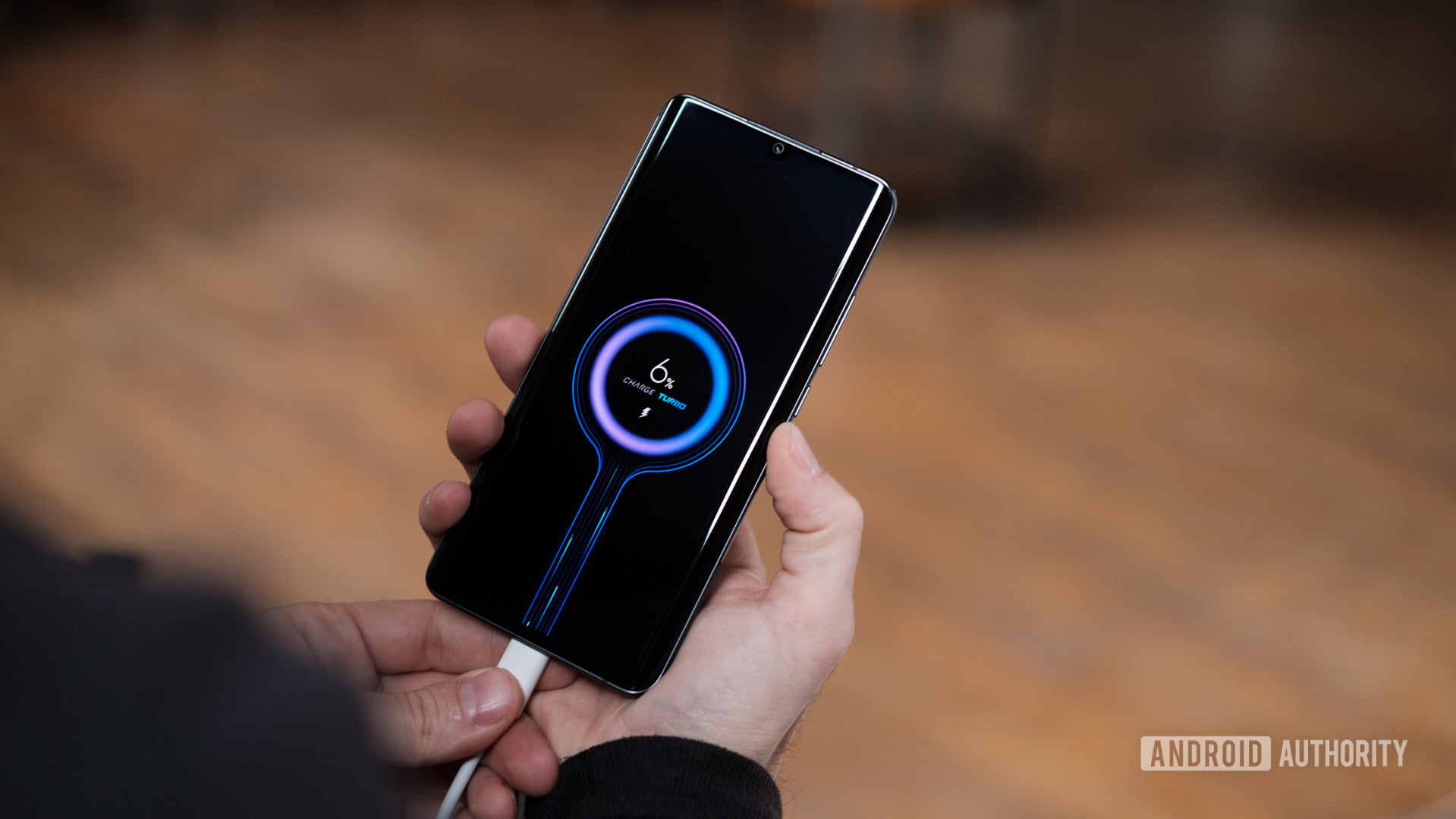
- 5,260mAh
- 30W charging
- No wireless charging
The Xiaomi Mi Note 10 relies on a massive 5,240mAh battery, so it would make sense that battery life is pretty great. The Snapdragon 730G is also much more power-efficient than the beefier Snapdragon 855, which all adds to battery life.
On an average day, I got about seven and a half hours of screen-on time, which is very good.
On an average day, I got about seven and a half hours of screen-on time, which is very good. In comparison, the OnePlus 7T averaged around five and a half hours. Probably the only phones that have beat this battery life this year are the HUAWEI P30 Pro and HUAWEI Mate 30 Pro. The P30 Pro landed me 10 hours of screen-on time.
The Mi Note 10 also comes with a 30W charger and was able to charge to 100% in one hour and six minutes. This is extremely fast. It charged to full capacity faster than the OnePlus 7T, which also uses a 30W charger.
Camera

- Standard: 108MP, f/1.69, OIS
- 2x Telephoto: 12MP, f/2
- 3.7x Telephoto: 8MP, f/2, OIS
- 5MP Crop on 3.7x 8MP tele camera, Xiaomi says it results in 5x optical zoom (but that’s not how optics work)
- Ultra-wide: 12MP, f/2.2, 117-degree FoV
- Macro: 2MP, 1.75μm pixel size
- Teardrop selfie camera: 16MP, f/2.0
The Mi Note 10 has five cameras on the back and one on the front. The standard 108MP sensor has a sensor size of 1/1.33-inches and an individual pixel size of 0.8μm. These are the same size as the 48MP Sony IMX586 sensor. The Mi Note 10’s sensor, however, is quite a bit larger — 1/1.33-inches versus the 1/2-inch sensor on the IMX586, so you get more resolution at the same quality per-pixel.
The pixel binning technology works the same as it did on the 48MP IMX586. The sensor groups pixels into sets of four and then takes data from adjacent pixels to produce a standard result. This allows the phone to pixel-bin down to 27MP for better low-light performance or shoot at the full 108MP if desired.
Below the main lens, you’ll find a 12MP 2x telephoto lens. This lens does not have optical image stabilization. The lens below it, however, does.
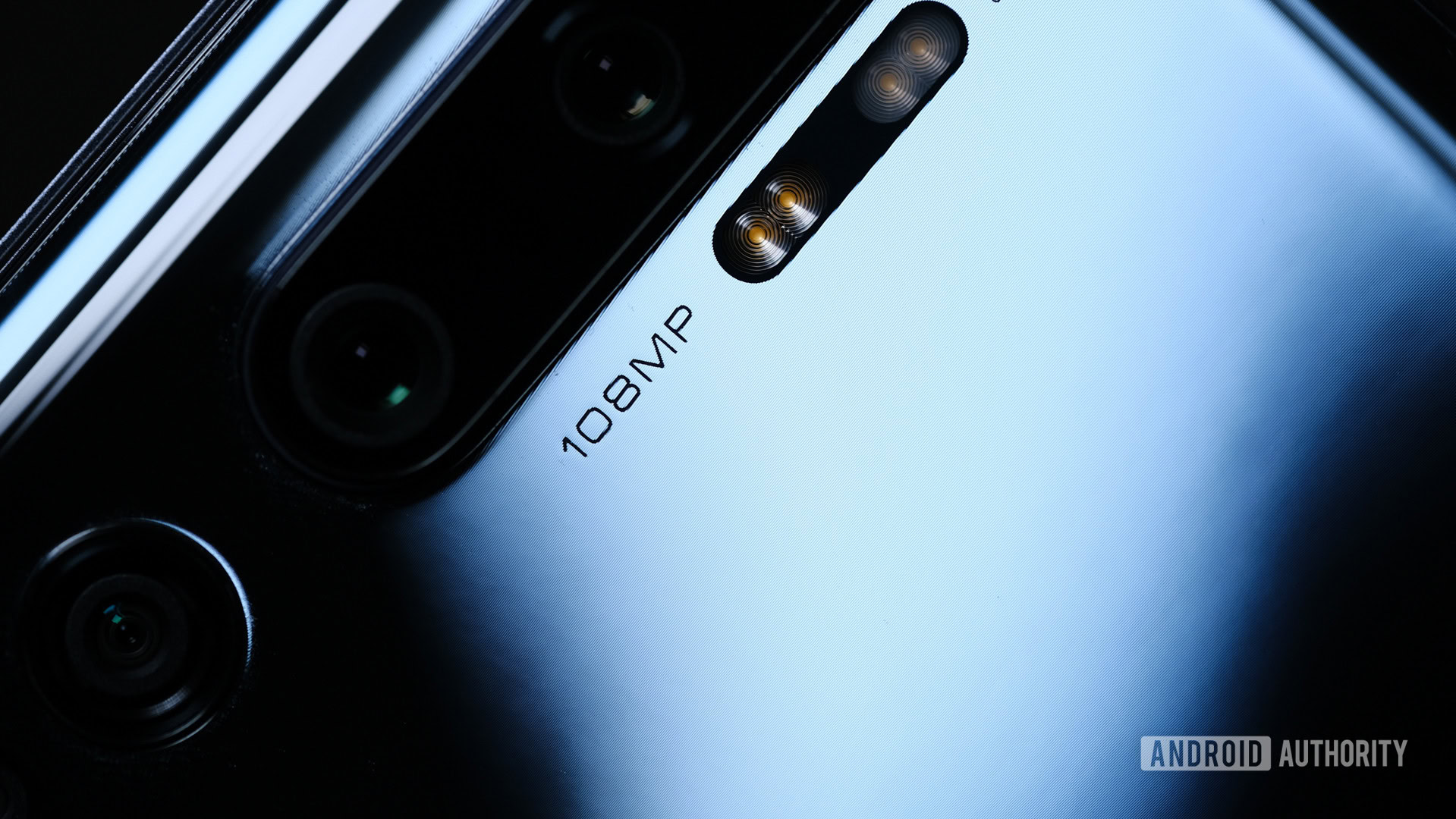
Xiaomi advertises this third lens as a 5x optical telephoto lens, but that is not the case. This is a 3.7x optical telephoto lens on an 8MP sensor. Xiaomi then performs a digital crop to produce a similar reach as a 5x telephoto, but make no mistake, these are not the same thing. No matter the reach, the resulting image will have the same perspective distortion as a 3.7x optical zoom.
This is pretty misleading marketing from Xiaomi. While most consumers won’t be able to tell the difference, this is not true 5x optical zoom, as is printed on the body of the device. There’s a reason HUAWEI had to use a special prism mechanism in the P30 Pro to make 5x optical zoom in a smartphone a reality.
This isn't true 5x optical zoom
The 3.7x camera can also do 10x optical plus AI hybrid imaging, and a 50x cropped zoom. Like the HUAWEI P30 Pro, you should only use this in extreme circumstances. It is very muddy.
Below this 5x zoom lens, you’ll find an ultra-wide lens, and below that, you get a dedicated macro camera. The latter shoots 2MP images and has a bigger pixel size of 1.75μm.

As far as actual image quality, I’ve always been a fan of Xiaomi cameras. They have a nice color profile that isn’t overly saturated and doesn’t oversharpen or have too much contrast.
In good light, the Mi Note 10 has fantastic color and sharpness. In medium- to low-light situations, it doesn’t do so well. There is a significant loss in color detail in these circumstances, and images end up looking incredibly washed out and soft — especially in the 108MP mode.
While 108MP images look great in daylight, this phone is a case study in why you need to scale sensor size with megapixels. It’s true that this phone has the biggest sensor in a smartphone today, but when you subdivide each pixel to just 0.8μm, there is a significant loss of detail versus a larger sensor. I would personally stick to 27MP mode unless you are in an extremely well-lit situation.
The camera app itself is fairly simple, with a scrolling carousel on the bottom to switch between modes. There is a dedicated 108MP mode, so the standard photo mode will bin to 27MP images.
Portrait mode is quite good, with nice background separation. There is a bit too much sharpening in this mode, however. Still, the image is pleasing overall.
The selfie camera is generally very good. It’s nice and sharp and looks more natural than a lot of other cameras. This sensor is 32MP.
The dedicated macro camera is quite cool. It is only 2MP, but I think Xiaomi understood you don’t need crazy resolution for macro.
If you want to see full resolution photos, check out our Google Drive folder or read our in-depth camera review here!
Software
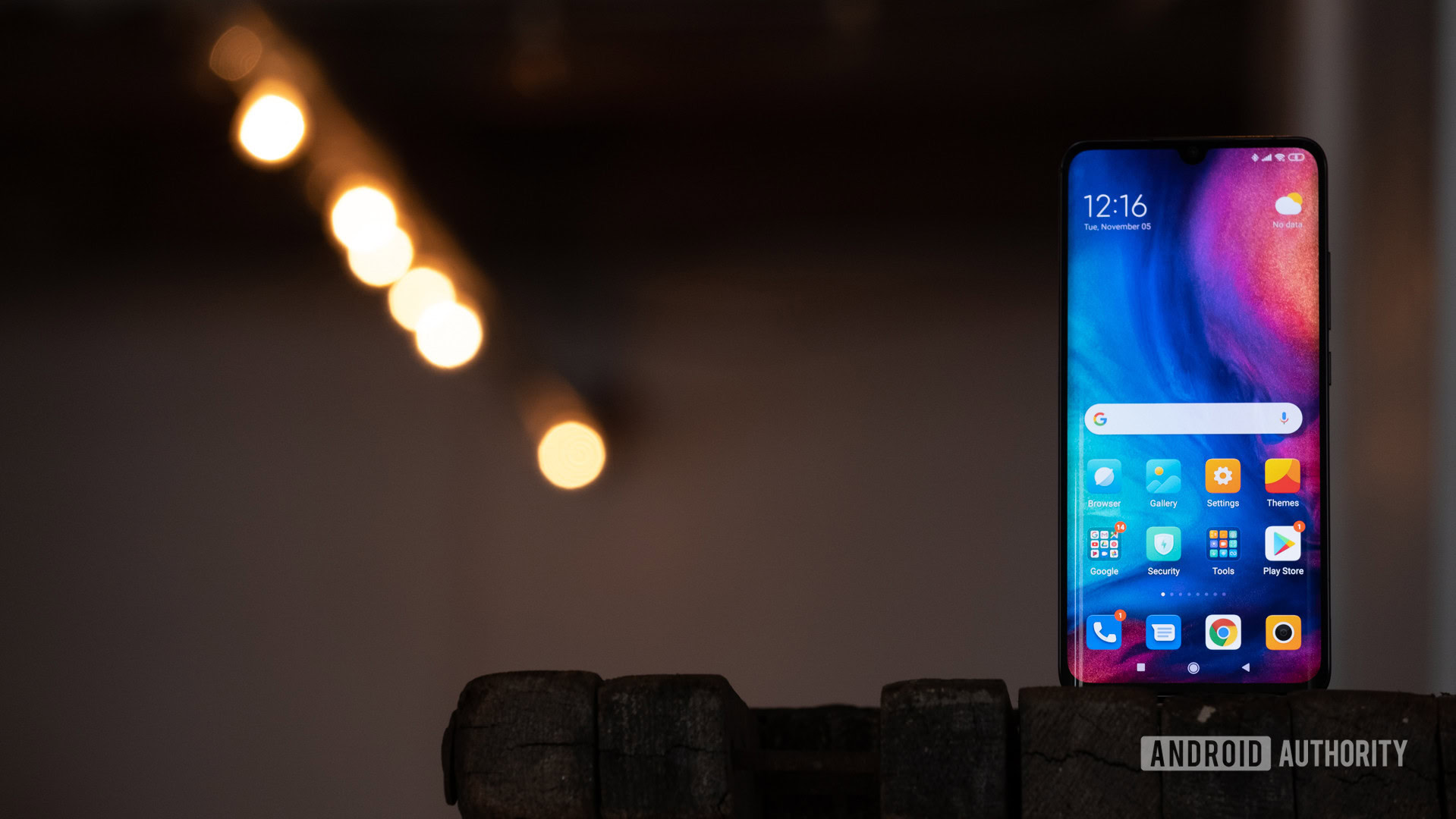
- MIUI 11
- Android 10
UPDATE: 22 May, 12:00PM ET: The Xiaomi Mi Note 10 has finally been updated to Android 10, bringing a number of bug fixes and optimizations.
The Xiaomi Mi Note 10 runs MIUI 11.0.3.0, which is based on Android 9 Pie. Being frank, manufacturers need to release phones on the current version of Android — no exceptions.
As far as the experience goes, MIUI 11 is just okay. There is no app drawer by default, which always annoys me. The interface has a bubbly aesthetic that reminds me of LG phones, and it just feels a bit outdated. Of course, if you don’t like it you can always install a launcher.
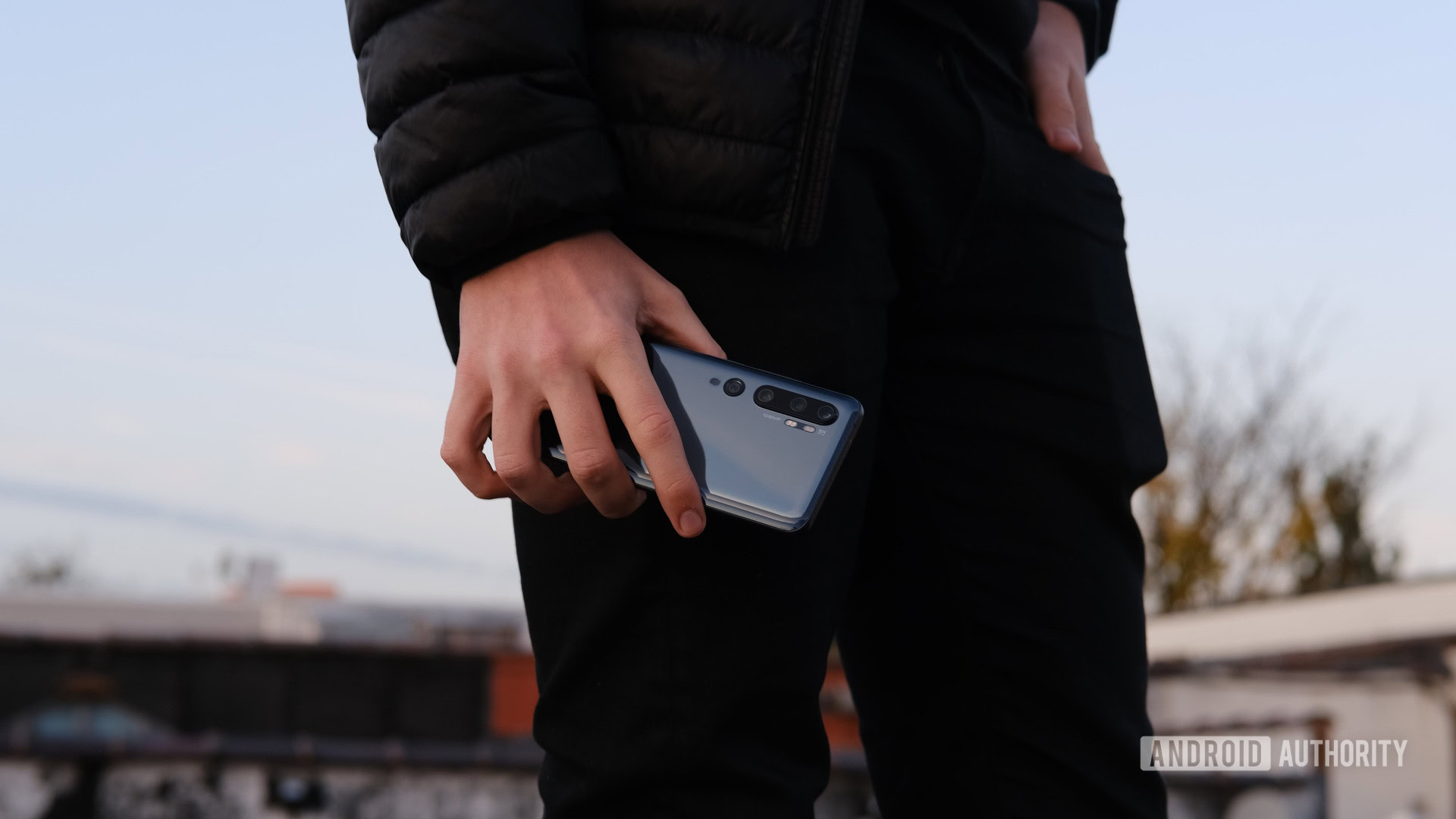
Xiaomi has added a new file transfer feature called Mi Drop, which is a pretty massive ripoff of Apple’s AirDrop. That being said, it works natively with OPPO and vivo phones, meaning potential compatibility is much wider than that of the iPhone.
As a package, MIUI is not great, but I am also not the region the company is targeting with this device. Most Xiaomi devices suffer from excessive ads to subsidize the device itself, and that is true here as well.
Audio
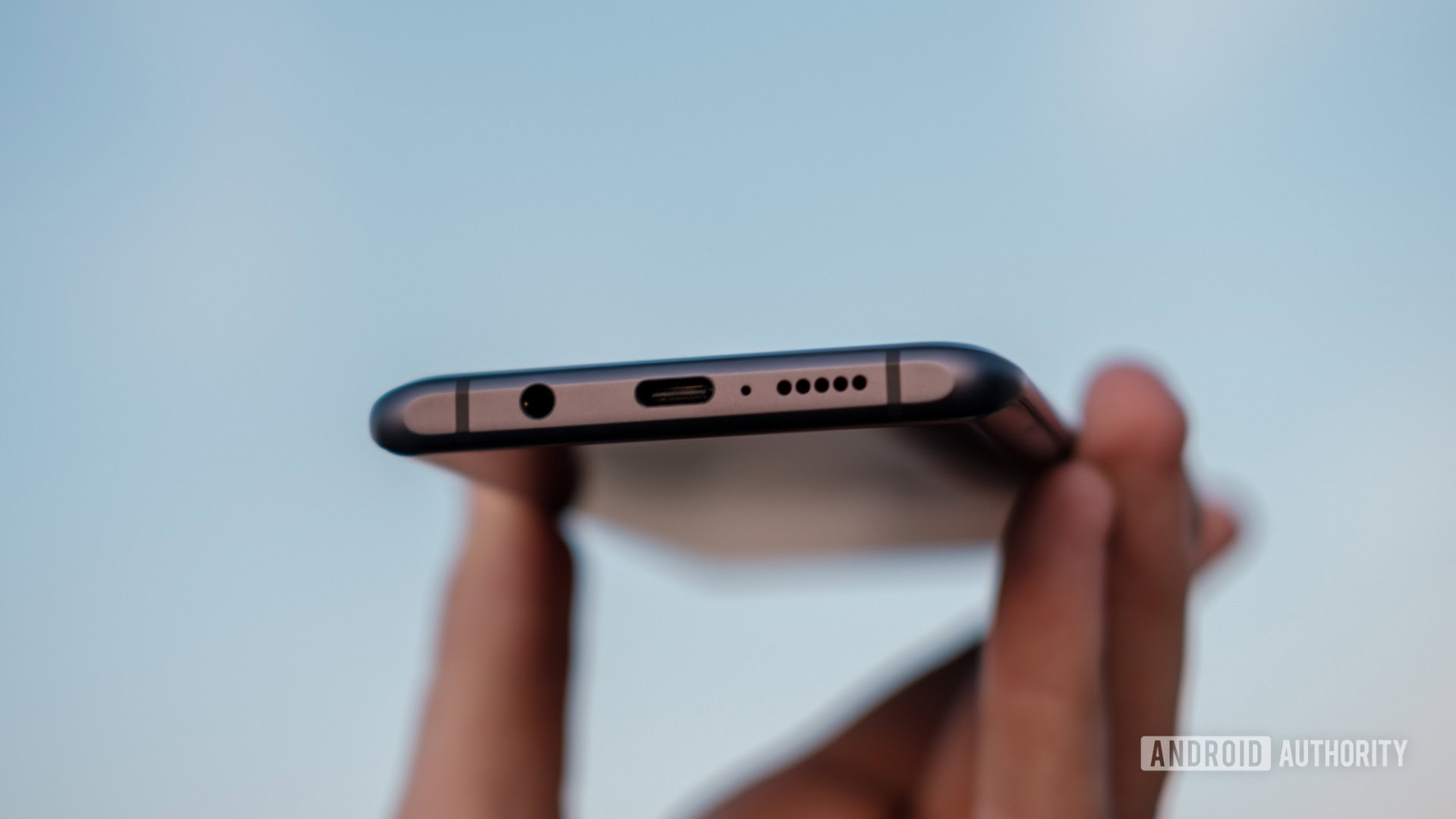
- Headphone jack
- Single bottom-firing speaker
The Mi Note 10 has a single bottom-firing speaker, which gives a less full sound than stereo speakers. That said, it outputs some nice treble and highs. The high end sounds like it’s just about to peak but manages to hold on, even at max volume.
Unfortunately, the bass is almost non-existent out of this speaker. Bass is easily drowned out by the mids and highs and ends up sounding like a mid-end sound itself.
A headphone jack and an IR blaster? Sign me up.
The headphone jack is a huge plus. The excuse most manufacturers make for removing the jack is to make room for a larger battery, but Xiaomi has proved that excuse is inadequate. If Xiaomi can include a 5,260mAh battery in a form factor this thin and add a headphone jack, other manufacturers can do the same.
Xiaomi Mi Note 10 specs
| Xiaomi Mi Note 10 | |
|---|---|
Display | 6.47 inches-inch AMOLED, 19.5:9 aspect ratio, Waterdrop notch, Full HD+ (1,080 x 2,340) resolution, 81.7% screen-to-body ratio Gorilla Glass 5 |
Chipset | Qualcomm Snapdragon 730G (Kryo 470) Adreno 618 |
RAM/Storage | 6GB + 128GB No microSD expansion |
Camera | Rear cameras: 108MP 1/1.33", OIS 12MP 2x telephoto 5MP 5x telephoto 20MP Ultra-wide 2MP macro |
Battery | 5,260mAh 30W charging USB-C |
Dimensions | 157.9 x 74.2 x 9.67 mm |
Weight | 208g |
Colors | Midnight Black Glacier White Aurora Green |
Biometrics | In-Display fingerprint scanner Face unlock |
Sensors | Proximity sensor, In-screen ambient light sensor, Accelerometer, Gyroscope, Electronic compass, Vibration motor, IR blaster, NFC |
Headphone jack | Yes |
Connectivity | LTE FDD: B1/B2/B3/B4/B5/B7/B/B18/B19/B20/B26/B28 LTE TDD: B38/B40 WCDMA: B1/B2/B4/B5/B6/B8/B19 GSM: B2/B3/B5/B8 Wi-Fi (2.4GHz and 5GHz): 802.11a/b/g/n/ac Wi-Fi Direct/Wi-Fi Display Bluetooth 5.0 |
Value for money
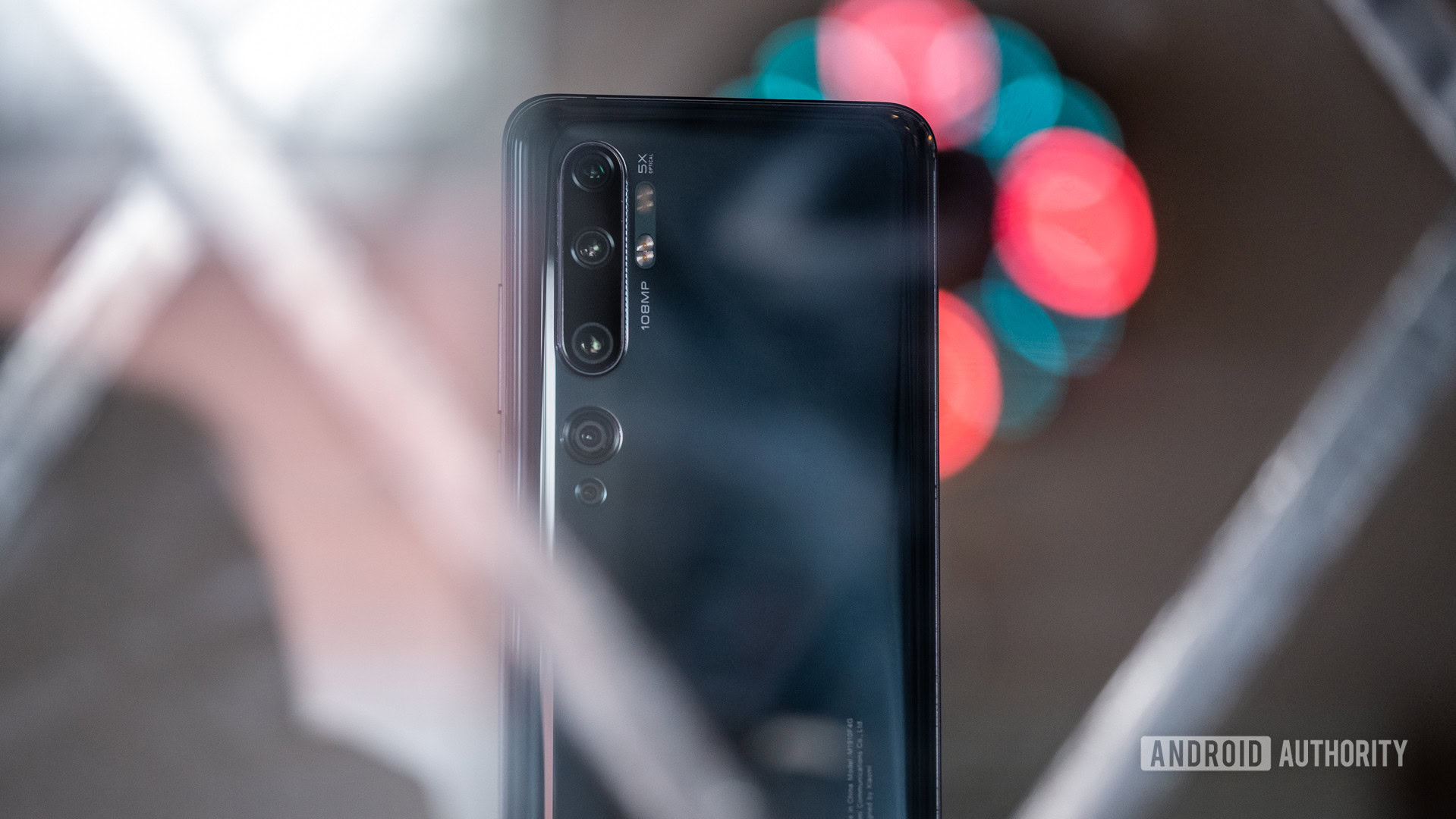
- Xiaomi Mi Note 10: 6GB RAM, 128GB of storage — €550
UPDATE: March 27, 2020 (2:30PM ET): The Xiaomi Mi Note 10 now costs about $465 on Amazon. That makes it an even better value than before.
For €550 (~$610), the Mi Note 10 offers a decent amount of value for the money, but only in two categories — camera and battery. The phone competes directly against the OnePlus 7T, which offers a more powerful Snapdragon 855+ processor, a better 90Hz display, and a UI that’s arguably better.
On the other hand, the Mi Note 10 has a more versatile set of cameras and a phenomenal battery. It also has a headphone jack and IR blaster, so it’s more of a Swiss Army knife than the 7T. If you’re looking for something a bit bigger, the OnePlus 7T is a great pickup. It offers a higher-resolution Quad HD+ display and similar 30W fast charging.
If you want an even more value-oriented option, the Pixel 3a and 3a XL are on sale right now for $100 off, making them just $299 and $379 respectively. These phones have great battery life and the classic Google experience, which is hard to get anywhere but a first-party Google phone.
The Mi Note 10 offers a decent amount of value for the money, but only in two categories — camera and battery.
What is the Mi 10 Pro 5G?
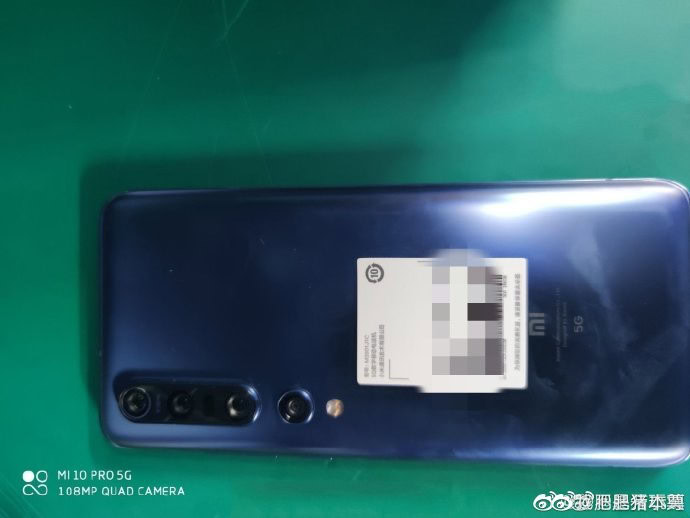
On January 20th, a tipster on Weibo posted some images of an alleged Xiaomi Mi 10 Pro 5G, ironically from another Mi 10 Pro 5G. From the images, we can see a similar camera setup, curved display and hole punch cutout. Unfortunately, there doesn’t appear to be a headphone jack in this device, but that’s become pretty common with high-end devices at this point.
The images also show a 65W charger, which has become more and more common among Chinese devices like the OPPO Reno Ace.
We have no idea when this phone will launch, but leaks suggest that it will feature the new Qualcomm Snapdragon 865 chipset and 12GB of RAM. That would directly undercut Samsung, who is expected to announce its Snapdragon 865-powered Galaxy S20 series on February 11th. The Galaxy S20 Ultra is also slated to use Samsung’s 108MP camera sensor.
Be sure to stick around for when we learn more.
UPDATE: March 27, 2020 (2:30PM ET): The Xiaomi Mi 10 and Mi 10 Pro have just launched, sporting most of the specs we expected. Check out our coverage here.
Mi Note 10 Lite
Xiaomi has just released the Mi Note 10 Lite, swapping out things like the 108MP camera for a 64MP shooter. You can find details about the Mi Note 10 Lite here.
Xiaomi Mi Note 10 review: The verdict
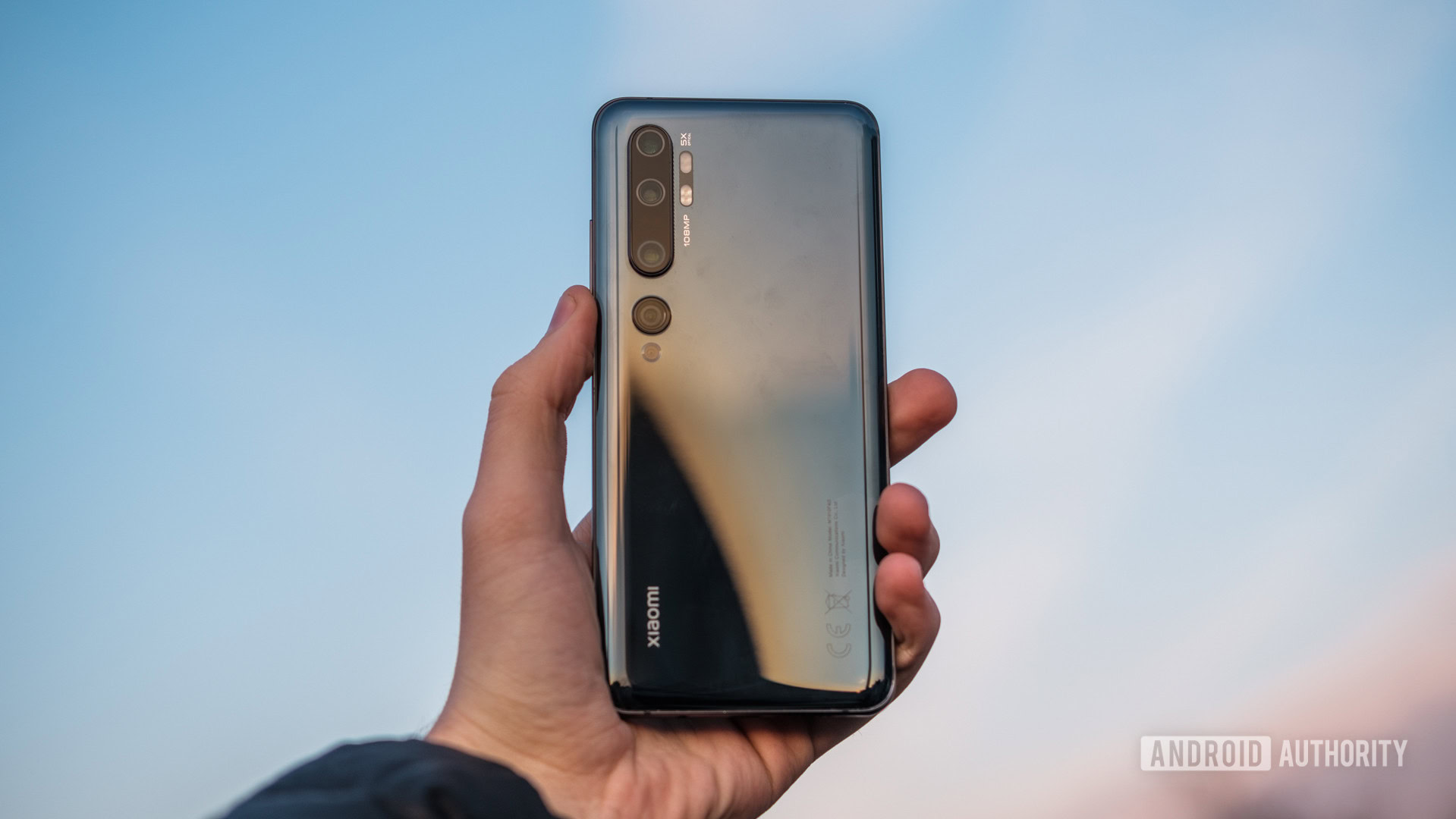
The Xiaomi Mi Note 10 is the first phone with a 108MP sensor, and there is something to say for a company pushing the bounds of innovation. I love Xiaomi’s cameras and think the Mi Note 10 is a jack of all trades in terms of imaging, but the industry as a whole needs to stop pushing the fallacy that more megapixels automatically make a device better.
In all but perfect lighting conditions, the 108MP mode performed worse than the standard binned 27MP mode. This was particularly noticeable in night mode. While the ability to shoot in this resolution is nice to have, consumers should avoid getting caught up in the marketing hype it produces. Its small pixels just don’t capture enough light.
As a package, though, the Xiaomi Mi Note 10 offers a lot of value. If battery life, camera versatility, and extras like a headphone jack and an IR blaster are important to you, it’s hard to find a competitive device at this price point.